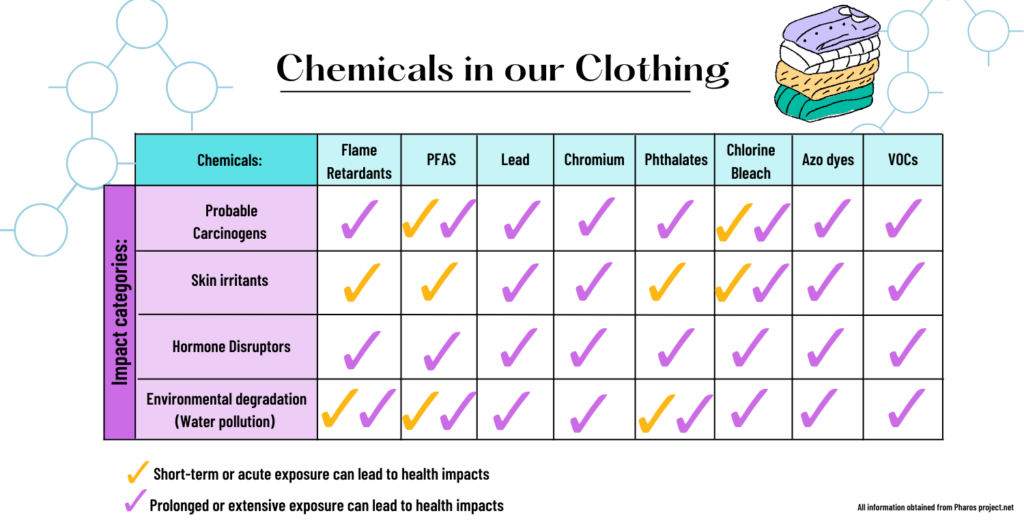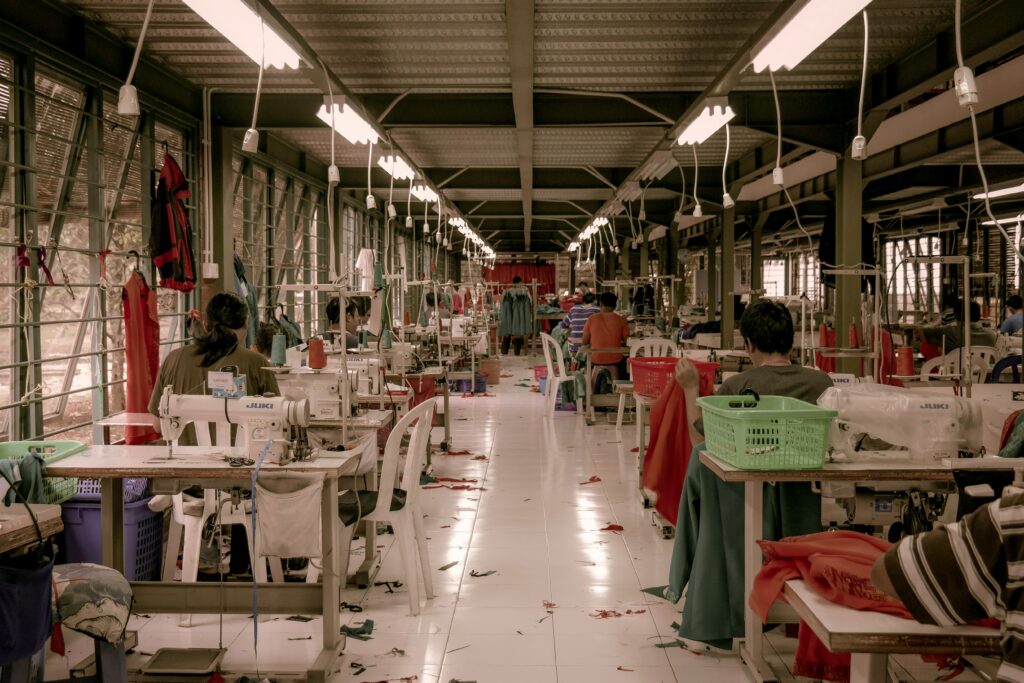3 health issues to consider before buying fast fashion (ever again)
We know. Fast fashion is the easiest way for all of us to keep up with the latest trends, buy affordable clothes quite regularly and feel satisfied for our “value for money” choices. Despite the undeniable advantages of wearing new, shiny clothes that can boost our image, self confidence, or feel good state in general, there is something else above all that: health. Our own health and public health.
The “fast fashion” definition points to a different business and production model that involves getting through all stages from design to the stores’ shelves in an extremely short time (for e.g. 15 days concerning Zara). So it’s a matter of few weeks for a product to be designed, manufactured, marketed, shipped and get to the retail stores for the customer to buy it in a very good price. Sounds like a well-organized, robust production model that maximizes value for top brands like Inditex, Primark, Shein, H&M, Asos, as well as the customer? Surely for the brand, doubtfully for the customer, needless to say the tremendous environmental impact to our planet.

But how is our health affected by fast fashion?
- Exposure to harmful chemicals in our clothing
This is the number one factor to consider next time you buy from a fast fashion brand. Fashion FWD, a trusted source of consumer content around safe apparel with the mission to drive more informed purchases and responsible practices, rings a bell for toxic chemicals such as PFAS, chrome VI, flame retardants and heavy metals in our clothes.
Chrome VI is about chromium compounds used as pigments in dyes, paints, inks, plastics and in the production of leather products, in dyeing of wool and have often been reported to exceed permitted limits, thus having harmful implications for our bodies, even carcinogenic. Data also reports that 0,5-0,6% of the population suffer from acute chrome allergies which cause inflammation, such as swelling, blisters, itchy red spots and peeling.
Flame retardants (some of which are restricted in apparel in certain states) are used to fireproof textiles for toddlers, but have been shown to affect the endocrine system and have been linked to developmental toxicity and lower IQ levels. What is more, they are bioaccumulative which means that they can build up in the body to harmful levels.
PFAS (Polyfluorinated substances) or often referred to as “forever chemicals”, are used in water and stain resistant clothing, printed textiles, leather and even cosmetics! It is found that 20% of indoor and outdoor clothing and 10% of sportswear and footwear products are coated in PFAS, according to a 2019 European Commission Report. The important thing to know is that PFAS are suspected to be a human carcinogen and can cause serious health effects at high enough levels, such as decreased fertility, hormonal changes, increased cholesterol, weakened immune system response, and growth and learning delays in infants and children. As a super resistant material, it is very hard for the chemical to break down and could still be found in our bodies and environment for several years later.
Heavy metals (like lead, antimony, cadmium) are used to stabilize colors in the dyeing process and can be found in vividly colored synthetic products, but also in both natural and synthetic fabrics such as cotton and polyester. However, when high concentrations of those chemicals come into contact with the skin (absorbed or ingested) they are linked to cancer, dermatitis and reproductive damage.
Below is a very useful and interesting infographic about the most frequently used chemicals in clothing and the subsequent impacts on our health and the environment.

- Hazardous waste flows from factories to streams and groundwater sources
The second negative impact fast fashion is already having on public health and the environment is the hazardous waste after the dyeing process, since data reveals that textile dyeing is the world’s second-largest polluter of water and simultaneously the second largest consumer industry of water. As Fashion FWD organization points out, according to the Worldwatch Institute, 705 of China’s lakes and rivers are contaminated as a result of wastewater runoff and poor chemical regulation, while the chemicals used in the fashion industry are highly toxic for fish species that are later consumed by humans. Populations relying on these water sources have an increased risk of gastrointestinal cancer, skin disease and sensory loss. Moreover, while fast fashion brands massively use synthetic fibres like polyester, nylon and acrylic, the laundering of those synthetic textiles results in throwing large amounts of microplastics into the ocean. Particularly, tanning process of leather is among the most toxic in all of the fashion supply chain because the chemicals used in this process (mineral salts, formaldehyde, various oils and dyes) are not biodegradable and contaminate water sources, with consequences that have not even yet been recorded on global scale.

- Harmful conditions for the people working in manufacturing facilities
There is no doubt that people working in textile factories, usually in underdeveloped or developing countries are exposed to chemicals and hazardous working conditions, with limited safety equipment, extremely low wages and workplace harassment. Occasional phenomena of child labor cannot be disregarded either, as well as farmers’ health who are exposed to pesticides and run the risk of respiratory problems and disorientation. In the same context, dye workers suffer from high rates of bladder cancer, while the process of denim sandblasting can cause severe skin and lung irritation.

The above 3 facts are really hard to ignore when climate change is already out there, showing its true face and taking into account how vulnerable we are to public health crises and pandemics, in the last decades. We all need to shift from fast fashion to sustainable fashion, in order to reduce our carbon footprint and secure our health. We can purchase from responsible brands, choose garments that use less than 20% polyester, avoid clothing with descriptions like “wrinkle-free,” “stain resistant,” and “waterproof”, purchase certified non-toxic apparel (e.g. Oeko-Tex Standard 100) and shop second hand clothes. As consumers we can be more environmentally conscious concerning our shopping habits, by shopping responsibly and choosing to spend our budget to buy one good quality item, rather than a pile of garments ready to give up some weeks later. Let’s not forget the amount of clothes discarded: 92 million tones globally per year – that is a truck full per second.
Sign up for our newsletter and follow us on social media for more interesting and valuable information about people and our planet.
Sources:
https://edition.cnn.com/style/what-is-fast-fashion-sustainable-fashion/index.html
https://www.fashionfwd.org/what-can-we-do?rq=heavy%20metals
https://www.fashionfwd.org/resource
https://www.earthday.org/toxic-textiles-the-chemicals-in-our-clothing/


